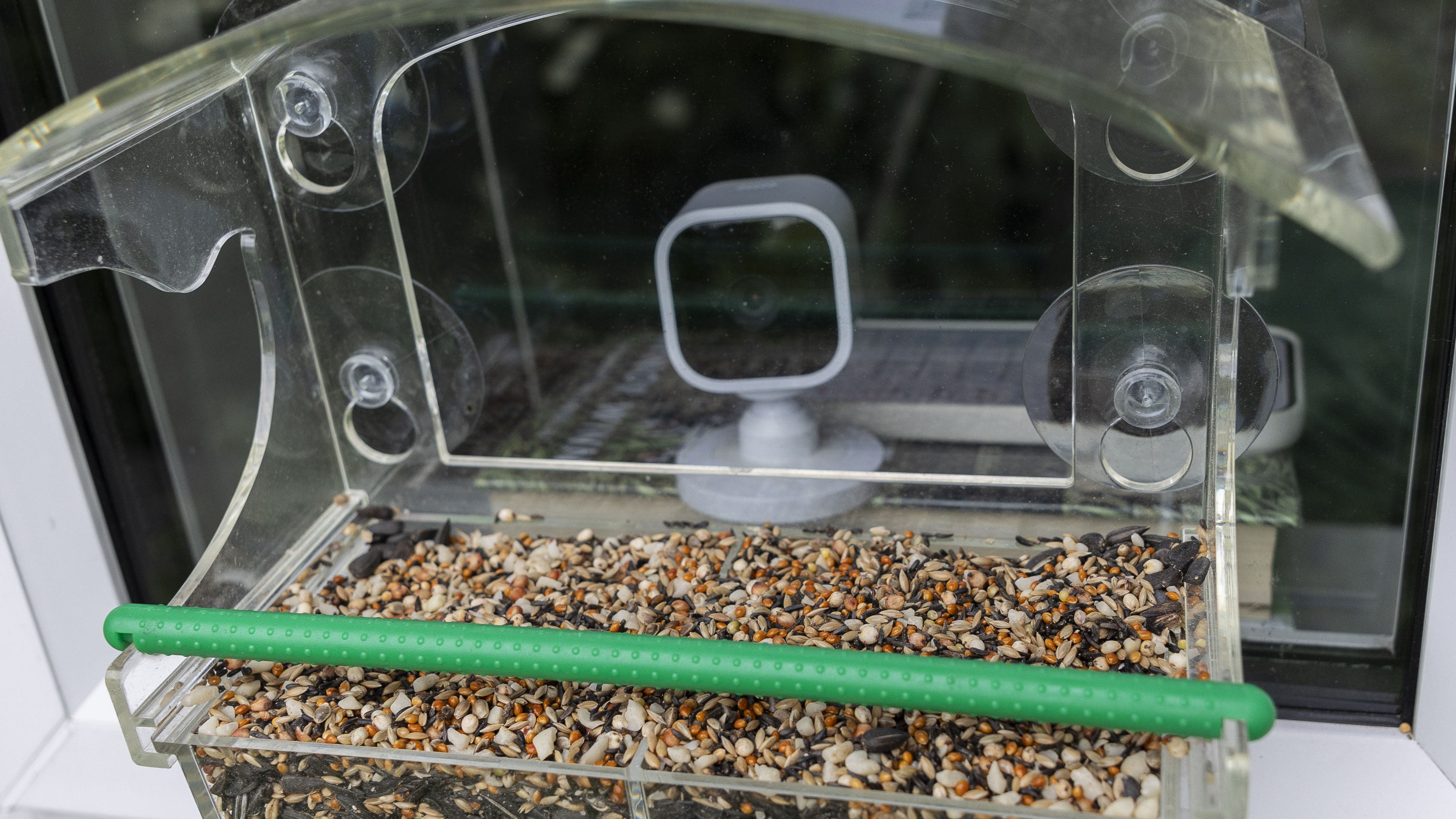
Blink Mini camera
Window bird feeder
High-quality bird food
Birds are skittish by nature, and for me that makes sighting them all the more exciting. I’ve always found watching birds on a feeder or table rewarding and looked for ways to close the distance for a more intimate view. That's meant many mornings trying to capture birds with a long telephoto lens – even getting some sharp results. But it takes time for birds to get used to your presence, and most of us don’t need professional photography gear to observe birds in our everyday lives.
An abundance of the best bird feeder cameras have come to the market in recent years, and for good reason. They’re a simple, accessible addition to any nature lover's garden, and once established give you a close-up viewing window to the comings and goings of your feathered friends via a feed on your phone. Bird feeder cams are also great for teaching kids about different species, or bringing the joy of birdwatching to those with lowered mobility.
As a self-confessed bird nerd, I’ve tried several futuristic feeders, including the Netvue Birdfy Feeder AI. It’s got the tech to recognize birds and alert you when they land, but it’s also big, bulky, and expensive. After eventually gifting it to my bird-loving parents, I wondered how hard it'd be to make my own feeder cam (spoiler alert, not very).
It used to be that to get up close to garden birds, you’d need a lot of tech knowledge and a whole lotta wires. But a cheap acrylic window feeder suckered and a Blink Mini is all you need to start watching your garden birds on a budget. As a seasoned wildlife photographer, I was pleasantly surprised by the video and audio quality that an entry-level security camera could give me, particularly for recording birdsong. Here's how I put it together, and you can too.
1. Get the gear
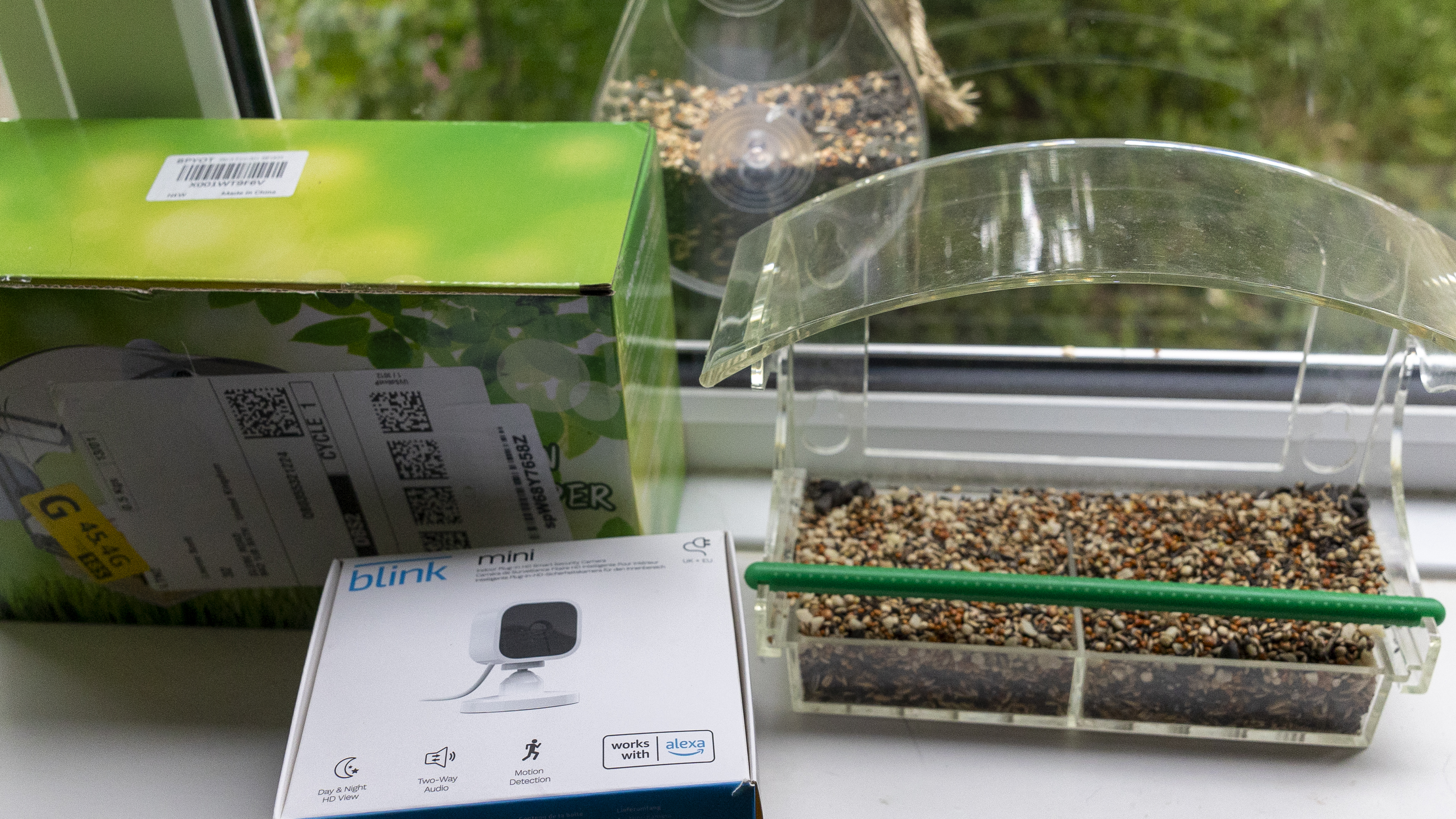
To make a basic bird feeder camera, you’ll need: a clear plastic feeder to stick on a window, a small camera to place on the other side, and bird food. A home security camera or webcam is perfect for this project, and I chose the Blink Mini for its small size, price, and motion-detection features. Being an Amazon device, you can also link it to Alexa and ask for “the bird camera” but I watch the feed from the Blink app on my smartphone.
Acrylic window bird feeders are cheap to pick up, easily cleaned, and provide a neat window for viewing your feathered friends. Choose one with a removable food tray and perch, plus strong suction cups on the edges of the feeder so they don't obscure your camera's view too much. The one I got cost £15 at Amazon UK while it $20 at Amazon US at the time of writing. A total cost of $50 / £40 is much less than a dedicated bird feeder camera.
2. Choose a spot
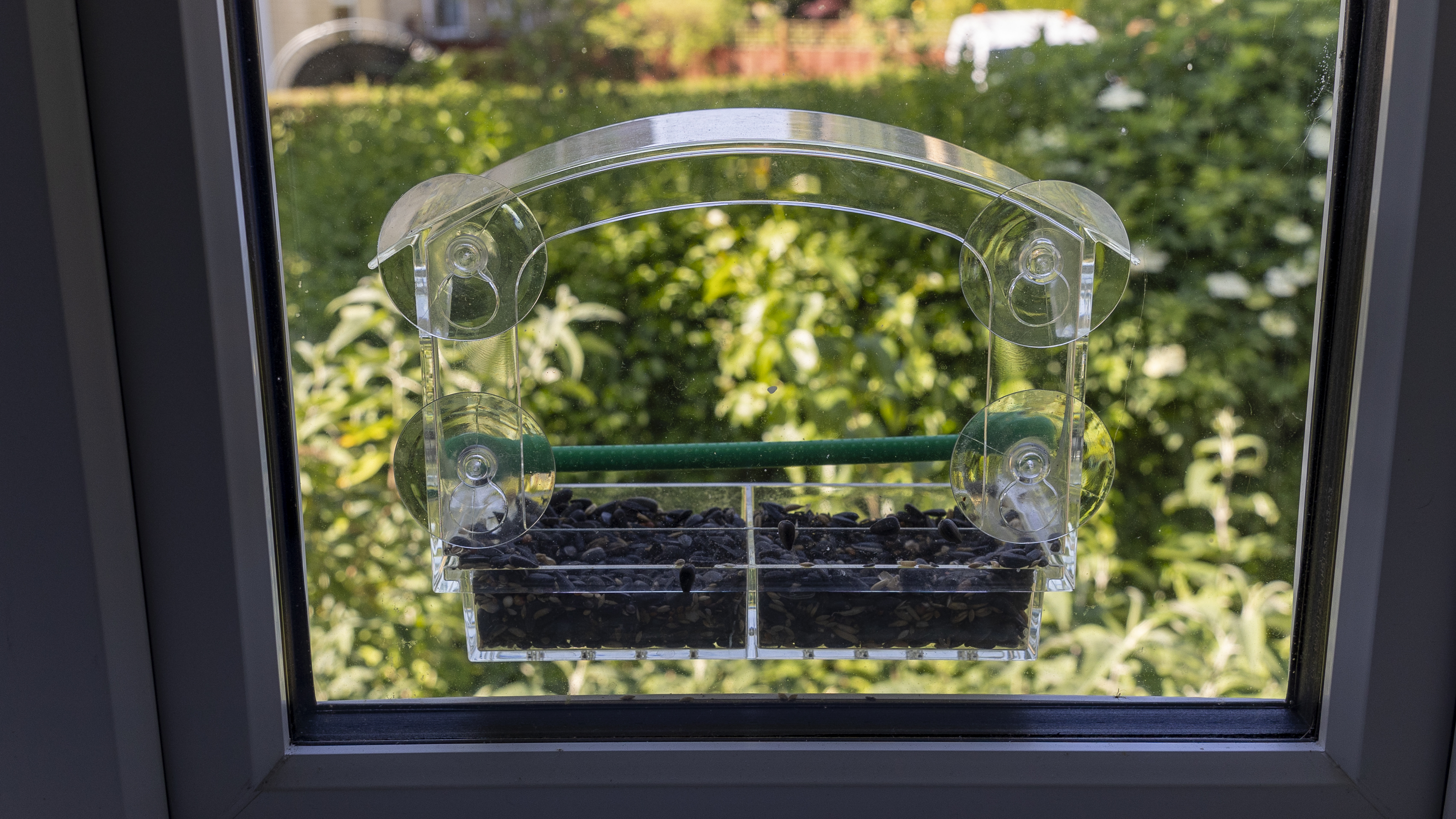
Birds take time to find and get used to a new feeder. From experience, you will need to be patient while it establishes itself, but the right spot (like the right food) can speed up the process. I chose a window close to shrubbery and trees, knowing the birds would use these natural shelters for protection, hiding in any greenery as a resting place between snacking. You’ll also want to position the feeder high enough away from neighboring cats, and out of strong winds if possible.
The other thing to consider is disturbance from your household. Is it a window likely to be passed by constantly, and might this scare the birds away? When I realized that my first feeder by the front door was getting disturbed every time a delivery man turned up, I moved it to an upstairs bedroom window.
3. Add the right food
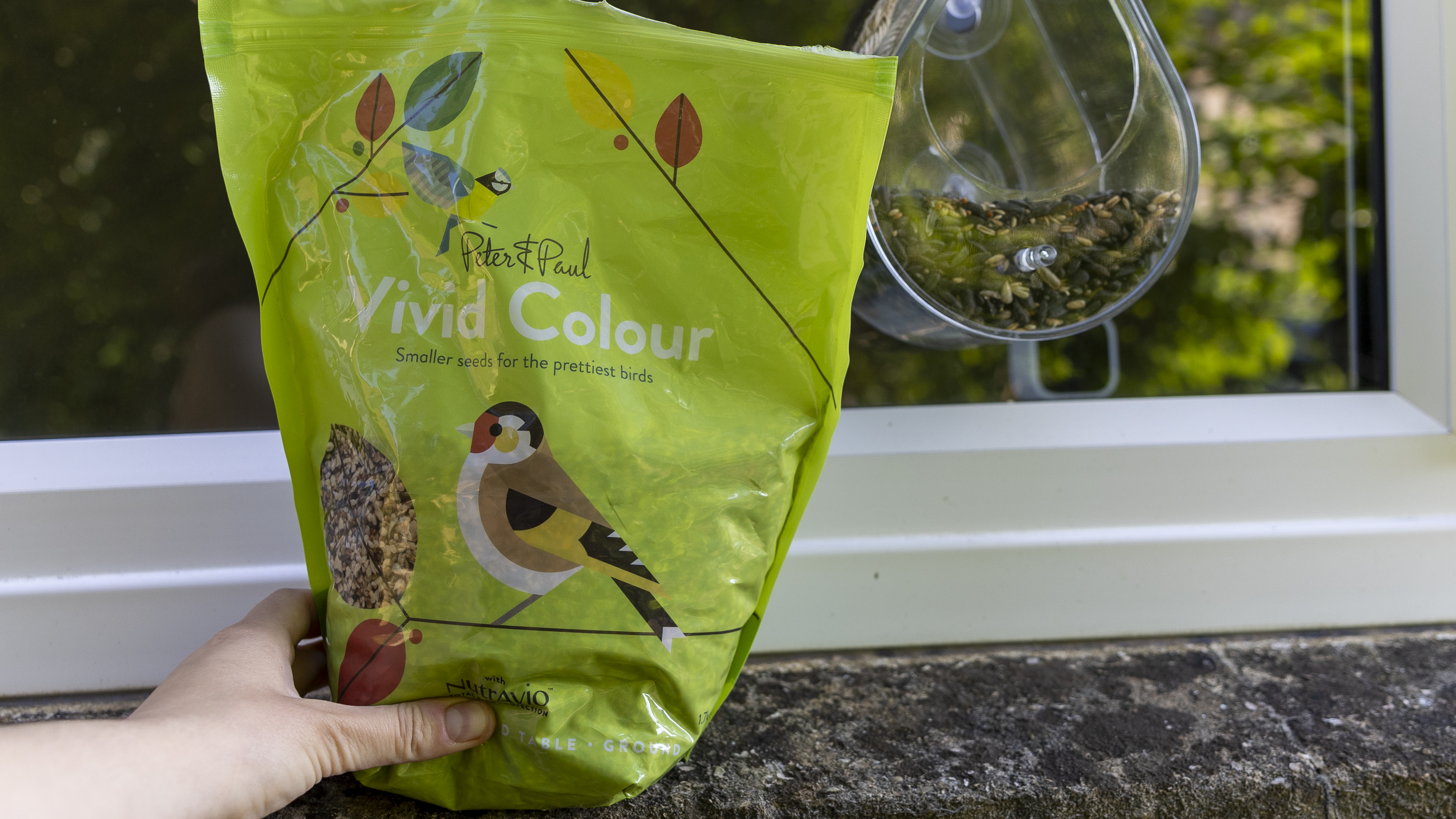
During the first few months of trying to attract flighty garden birds to my feeders, sightings were few. There were pigeons, magpies, and even squirrels, but none of the songbirds or tits I was hoping for. Why? Because I hadn’t given enough thought to what I was actually feeding them. Like people, different species of birds like different foods, and you should tailor your feed to the species in your local area.
I get lots of smaller visitors like Blue Tits, so I sought out wild bird food designed for birds with smaller beaks. It wasn’t cheap, but the best noms never are. I also made several homemade coconut feeders, filling them with suet, peanut butter and a seed mix for extra enticement around my main feeder. Don’t be stingy with your bird seed; fill it high enough that the birds don’t have to dip in too low to get a peck.
4. Set up the camera
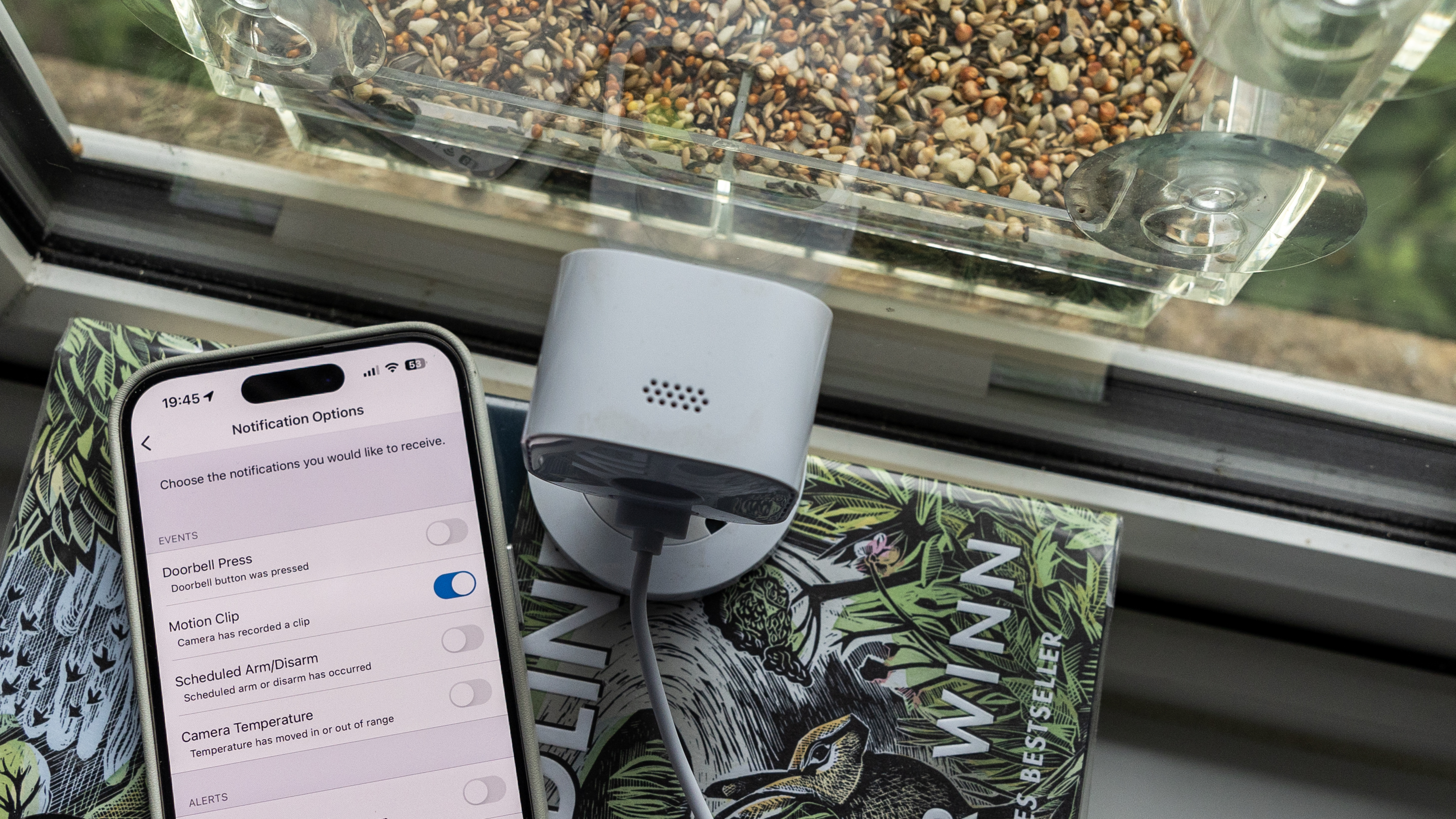
Once the food is in place, it’s time to set up the camera. Choosing one of the best home security cameras means you won’t need advanced photo skills to set it up – plug it in, download the accompanying app, and place it on a windowsill behind your feeder. You'll want the Blink Mini as close to the window as possible to reduce its reflection in the glass, but not so close to the perch that your birds are blurry (its minimum focus is 3 inches). I also used black tape to cover the light on its front, as it reflected brightly in the window and was distracting in the footage.
I also raised the camera on a few books to get it at the same height as the feeder’s perch. Keep checking the view of the camera until you’re happy with the view you’ve got. The Blink Mini has a 110-degree field of view, and I shuffled it about to avoid getting too much of the bird feeder in the frame.
5. Monitor and enjoy
Once the Blink Mini was in place and connected to my phone via Wi-Fi, I set it to ping my phone when it recorded a clip in the notification options. With a free trial, I could play back all the movements detected by the camera during the day – some street movements, but lots of birds too. The obvious downside of using a camera with a subscription plan like Blink (or Ring) is paying to record and store clips, but if you’re happy watching a live feed of the birds, or already have a subscription, then this won’t be a problem.
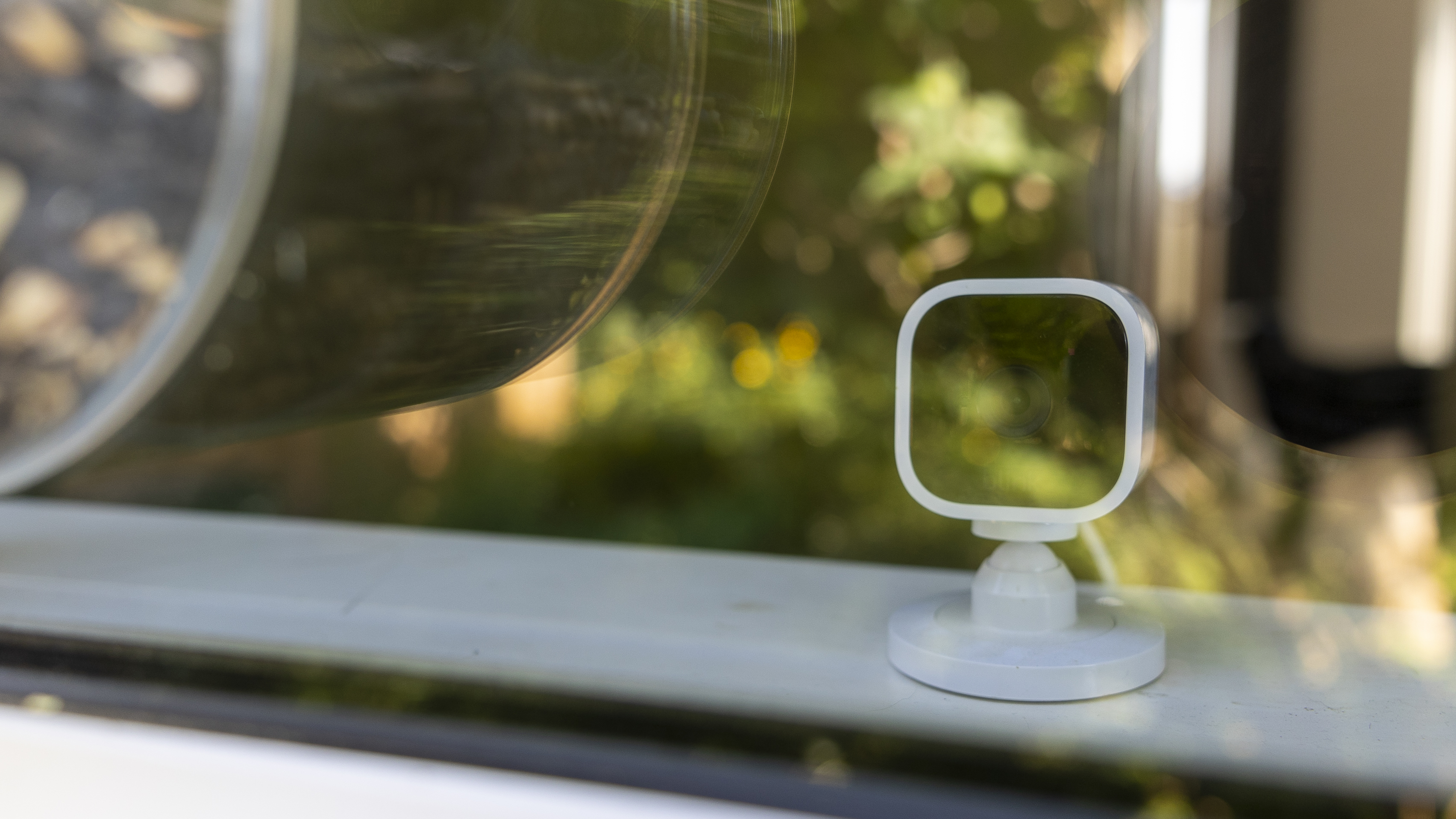
Despite being technically easy to set up, my bird feeder camera wasn't an instant success. Nature takes time, and I needed months of patience, several spots, and some bougie bird seed before I got the first notifications that the birds had landed.
And despite the Blink Mini being a low-budget security camera, I was happily surprised by the clarity of its video recordings. The in-built microphone also did a great job at recording birdsong, even through the glass window. Admittedly, the footage isn't quite as crisp as that from the Netvue Birdfy feeder, nor will the Blink help you to identify the different birds. But for its price and ease of setup, it's hard to find fault.
Whether you're in a hide or at home, birdwatching is always worth the wait. Getting to know my garden visitors has been such a delight, and the bug for nature sightings is now so strong I've just ordered a Blink Outdoor camera. Watch out hedgehogs.







